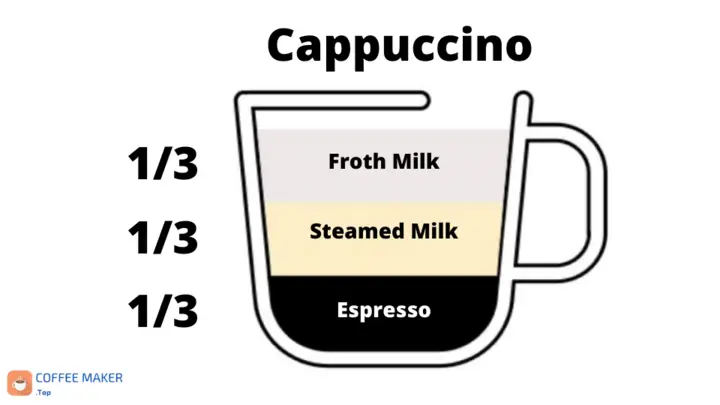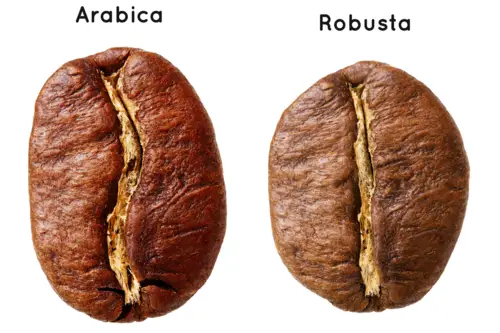One of the most popular coffee drinks in recent years is the cappuccino. This preparation has become increasingly popular in coffee shops and many coffee lovers’ homes. As it is a preparation with milk, it allows us to enhance the flavours of coffee with this additional ingredient, whether with cow’s milk or vegetable milk such as soy, oat or almond milk.
As cappuccino is a beverage prepared with milk, the question may arise as to whether or not it contains caffeine. Caffeine is usually associated with the taste of coffee – the stronger the coffee, the more caffeine we mistakenly assume it has. Caffeine has to do with coffee’s amount and not taste.
Although a cappuccino tastes little like coffee because it is mixed with milk, so we assume it has less caffeine. However, it has the same amount of caffeine as the espresso it was made with.
In the table below, you can see the amount of caffeine according to the amount of espresso used to prepare the cappuccino:
| Basis of preparation | Amount of caffeine |
| Single espresso | 65 mg |
| Double espresso | 130 mg |
| Triple espresso (large) | 195 mg |
The amount of coffee in a cappuccino
To determine how much coffee is in a cappuccino, the first thing to establish is the type and quantity of coffee used in the preparation. The cappuccino has only two ingredients, coffee and milk. And it is divided into three parts as follows:
| Ingredient | Quantity |
| Espresso coffee | 1/3 cup |
| Steamed milk | 1/3 cup |
| Frothed milk | 1/3 cup |
This basic ratio of 1/3 + 1/3 + 1/3 must be maintained when making any cappuccino, regardless of the size. In other words, if you want a larger cappuccino, add more espresso. You will always have two parts milk for every part espresso.

The amount of caffeine in a cappuccino
Having understood the issue of proportions with cappuccino ingredients discussed in the previous section, we can say, for example, that if we want a small cappuccino, we will have to use a 30 ml single espresso and, consequently, 60 ml of milk.
As we have already mentioned, the caffeine content of a cappuccino is directly related to the type of espresso we use. Therefore, we need to determine the amount of caffeine in the espresso. This depends on several factors, such as the type of bean or the roast, but in general terms, a simple espresso has around 60 to 80 mg of caffeine.
That said, if a cappuccino is prepared with just one espresso, it will have between 60 and 80 mg of caffeine. If it has two espressos, the amount of caffeine will double, between 120 and 160 mg.
You may be interested in: How much caffeine is in Dolce Gusto coffee pods?
Relationship between coffee bean type and caffeine in cappuccino
If you want to control the amount of caffeine in your cappuccinos, you will have to control it from the espresso you use for your preparations. To do this, you must pay attention to the coffee bean used in your espresso.
Remember that there are two types of coffee beans, Arabica and Robusta. Arabica is more popular as it has less caffeine than Robusta. In the following comparison list, you will find the main differences between these two types of beans so that you can understand them better:
Arabica bean:
- Elongated shape
- 18% of oils
- 8% of sugars
- 1.5% of caffeine
Robusta bean:
- Rounded shape
- 8% of oils
- 5% of sugars
- 3% of caffeine

It will be easy to control the amount of caffeine in your cappuccinos if you prepare them at home, as you can choose the type of bean for your espresso. If you prefer it with less caffeine, use an Arabica bean.
Otherwise, if you order a cappuccino in a coffee shop, it will be very difficult to control the amount of caffeine in your drink; in fact, the drink you order will most likely have as much caffeine as possible.
In general, the type of bean used in these establishments is Robusta. This type of bean has a more bitter taste and has fewer sugars and oils, allowing for fuller-bodied and creamier espressos, but it has a much higher caffeine level.
Related: Caffeine-free coffee: does it exist?
Can you prepare a decaffeinated cappuccino?
Yes, you can have decaffeinated cappuccinos. Based on the above, this will depend on the type of espresso you use. If you prepare a cappuccino with an espresso made with decaffeinated coffee, your cappuccino will also be decaffeinated.
More and more people prefer their coffee drinks to be decaffeinated. And because of this high demand, manufacturers are increasingly considering this.
If you make your cappuccinos at home, using decaffeinated coffee for the espresso in your preparation is sufficient. But if you go to a coffee shop, you should make sure they use decaffeinated coffee to prepare your cappuccino.
Can cappuccino capsules be decaffeinated?
Although decaffeinated coffee has become increasingly popular, it is still less popular than regular coffee. This may be why no brand has produced decaffeinated cappuccino coffee pods so far – it may be unprofitable for manufacturers.
But if you have a capsule coffee machine and want to make a decaffeinated cappuccino, you can resort to decaffeinated espresso pods, which are very easy to obtain. It would help if you made the espresso and froth the milk to get a decaff capsule cappuccino.
Is there a limit to how many cappuccinos you can consume daily?
The health departments of several governments have reached a global consensus on limiting excessive caffeine consumption in adults without affecting their health. This consumption is set at a maximum of 400 mg of caffeine per day.
Based on the above data and considering that a cappuccino made with a simple espresso has a caffeine level of between 60 and 80 mg, we can say that a maximum of 5 or 6 cappuccinos a day made with this type of espresso should be consumed. If you use larger espressos, you should consume fewer cups per day.
